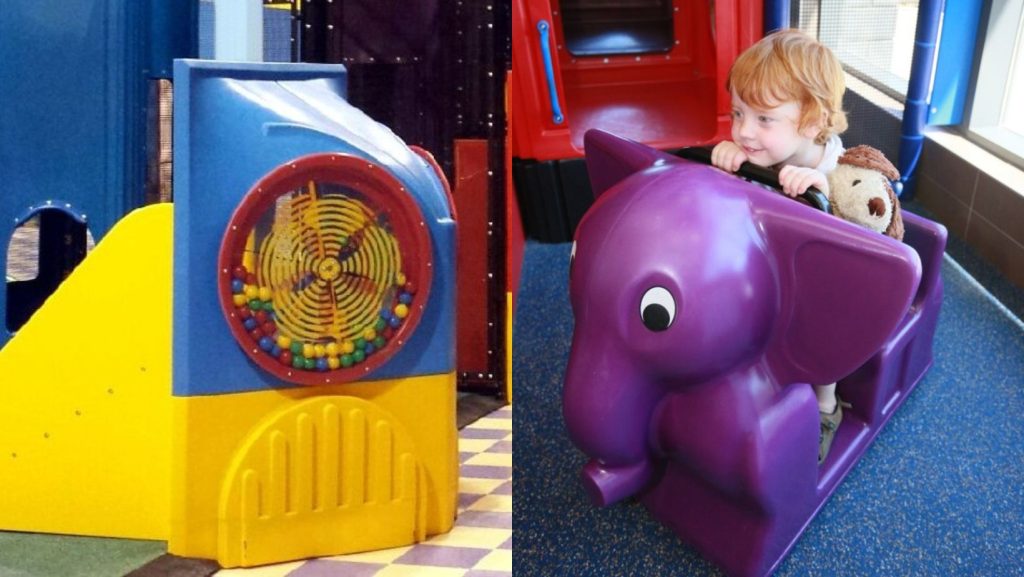
Every child deserves a place where they can play, learn, and make new friends in a safe and supportive setting. For an indoor playground business, creating an environment that embraces children of all abilities is essential for making every child feel truly welcome and included.
Creating an inclusive playground involves more than just physical accommodations. It requires a thoughtful approach to sensory, cognitive, and social needs. This post will explore eight practical ways to transform your facility into a truly accessible play space that benefits everyone.
1. Install Accessible Play Equipment
The foundation of an inclusive playground is equipment that everyone can use. This means moving beyond traditional structures to incorporate designs that support diverse physical abilities.
Consider adding ramps alongside stairs and providing transfer platforms that allow children using mobility devices to move onto play structures. Adaptive seating for swings and ride-on toys ensures no one is left on the sidelines. You can also feature play panels and interactive elements at various height levels, making them reachable from both standing and seated positions. This approach to accessible play ensures every child finds an activity they can enjoy.
2. Design Clear Signage and Wayfinding
A well-designed navigation system helps all visitors move through your space with confidence. Children with cognitive disabilities or those who are new to your facility can feel more independent with clear directional support.
- Use high-contrast colours and simple language for all signs.
- Incorporate tactile and braille elements for visually impaired guests.
- Implement a colour-coding system to designate different zones, which can help children navigate with minimal assistance.
3. Create Sensory-Friendly Spaces
The high energy of a playground can be overwhelming for children with sensory sensitivities. A dedicated quiet zone or low-stimulation area provides a necessary retreat. Think about your facility’s lighting, colour palette, and acoustics.
Many facilities now offer designated sensory-friendly hours with lower attendance caps and reduced sensory inputs, providing a more comfortable experience for families who need it.
4. Invest in Comprehensive Staff Training
Your team is your greatest asset in fostering an inclusive environment. Proper training equips them to interact respectfully and effectively with children and parents of all abilities. This education should cover disability awareness, safety protocols for assisting children with different needs, and using multi-modal communication methods. When staff can communicate using visual, verbal, and gestural cues, they create a more welcoming atmosphere for everyone.
5. Develop Inclusive Programming
Programming can be a powerful tool for bringing children together. Offering adaptive classes, specialized play sessions, or sensory-friendly hours can attract families who might otherwise feel excluded. Plan activities that appeal to multiple age groups and ability levels. The goal is to create shared experiences that foster connection and friendship among all children in your disability-friendly play space.
6. Ensure Facility-Wide Accessibility
True accessibility extends beyond the play structures. Your entire facility, from the parking lot to the restrooms, should be easy to access. This includes providing accessible parking spaces, clear and level pathways, and automatic doors at entrances. Restrooms should have accessible stalls, and including a family restroom with an adult-sized changing table demonstrates a deep commitment to meeting the needs of all your guests.
7. Prioritize Safety and Emergency Preparedness
Safety is paramount in any indoor playground business, but it requires extra consideration in an inclusive setting. Develop clear emergency evacuation plans that account for children with mobility challenges or other disabilities. Train your staff on how to assist everyone safely in an emergency. Regular maintenance checks on all your accessible equipment are also essential to ensure it remains safe and functional.
8. Communicate Your Inclusive Features
Once you’ve implemented these features, let people know about them. Families looking for an inclusive play environment actively search for places that meet their needs. Detail your accessibility features on your website, social media, and marketing materials. Provide information in multiple formats to reach a wider audience. Actively solicit feedback from families and show that you are listening by making continuous improvements. This dialogue builds trust and loyalty within your community.
Build an Indoor Playground for Everyone
These eight strategies work together to build a powerful and inclusive playground experience. By thoughtfully designing your equipment, facility, and programs, you create a space where every child feels they belong. Remember that improvements aimed at accessibility enhance the experience for all visitors.
Ready to start your playground business? Let SPI turn your vision into a vibrant reality with a custom indoor playground design. Contact us today to learn more.